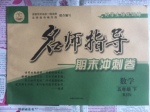题目内容
When an ant dies, other ants take it out of the nest, often within an hour after its death. This behavior interests scientists and they wonder how ants know for sure—and so soon—that another ant is dead.
One scientist recently came up with a way to explain this ant behavior. Dong-Hwan Choe is a biologist, a scientist who studies animals and plants. He found that ants have a chemical on the outside of their bodies that signals to other ants, “I'm dead—take me away” when it is dead.
But there's a question to answer: As we know, if an ant is dead, it stops moving. But when an ant is sleeping or knocked unconscious, it is also not moving. However, other ants don't move the living ant out of the nest. How do they know this ant is not dead? Choe found that ants have another chemical on their bodies, which tells nearby ants something like, “Wait—I'm not dead yet” when it is not dead. Choe suspects that when an ant dies, the chemical that says, “Wait I'm not dead yet” quickly goes away. When other ants detect the “dead” chemical without the “not dead yet” chemical, they move away the body.
To test his theory, Choe and his team put different chemicals on ants. When the scientists used the “I'm dead” chemical, other ants quickly moved the treated ant away. When the scientists used the “Wait—I'm not dead yet” chemical, other ants left the treated ant alone. Choe believes this behavior shows that the “not dead yet” chemical overrides the “dead” chemical when picked up by other ants. And that when an ant dies, the “not dead yet”  chemical fades away. Other nearby ants then detect the remaining “dead” chemical and remove the body from the nest.
chemical fades away. Other nearby ants then detect the remaining “dead” chemical and remove the body from the nest.
Understanding this behavior can help scientists figure out how to stop ants from invading new places and causing problems.
1.What is the function of the first paragraph?
A. Leading the following paragraphs.
B. Showing the main idea of the passage.
C. Introducing the background of the passage.
D. Giving a summary of the passage.
2.Which of the following has the closest meaning to the underlined word “overrides” in the fourth paragraph?
A. is weaker than B. is stronger than
C. is better than D. is worse than
3.What can we learn from the passage?
A. Living ants can also be taken away when they are not moving.
B. When an ant dies, it can tell others using a certain chemical.
C. A living ant can pretend to be dead using a special chemical.
D. Ants often use chemicals to communicate with each other.
4.Which of the following descriptions about Dong-Hwan Choe is right?
A. Choe did this study in order to stop ants from invading new places.
B. Choe is a biologist who is only interested in animals, especially in ants.
C. Choe first came up with an idea to explain this ant behavior,and then did some tests to prove his theory.
D. Choe did the research on this ant behavior on his own
5.What is mainly discussed in the passage?
A. How to decide whether an ant is dead or not.
B. Why ants have special chemicals on their bodies.
C. reasons for the removable behavior of ants.
D. How ants manage to keep their nests clean.
1.A
2.B
3.B
4.C
5.C
【解析】
试题分析:本文主要解释的是为什么蚂蚁死了以后,别的蚂蚁很快就发现这些死了的蚂蚁,很快就把它们的尸体搬走。解释了具体的原因,并进行了证明。
1.A推理题。文章中用第一段来引起读者的注意,让他们有继续向下阅读的欲望。目的在于引起下文。故A正确。
2.B推理题。根据文章最后一段When the scientists used the “Wait—I'm not dead yet” chemical, other ants left the treated ant alone. Choe believes this behavior shows that the “not dead yet” chemical overrides the “dead” chemical when picked up by other ants.可知在“Wait—I'm not dead yet” chemical比the “dead” chemical更浓烈的时候,蚂蚁们就不会把尸体搬走。故改词是指B项的意思。
3.B细节题。根据文章第二段最后一句He found that ants have a chemical on the outside of their bodies that signals to other ants, “I'm dead—take me away” when it is dead.可知蚂蚁在死亡以后用一种化学物质来告诉别的蚂蚁他已经死了。故B正确。
4.C推理题。根据文章3,4段内容可知,在第三段中,他先提出一个假设的观点,在第4段中用实验来证明自己的想法的准确性。这正是他追求真相的方法,故C正确。
5.C主旨大意题。本文主要解释的是为什么蚂蚁死了以后,别的蚂蚁很快就发现这些死了的蚂蚁,很快就把它们的尸体搬走。解释了具体的原因,并进行了证明。故C正确。
考点:科普类阅读。

 名师指导期末冲刺卷系列答案
名师指导期末冲刺卷系列答案